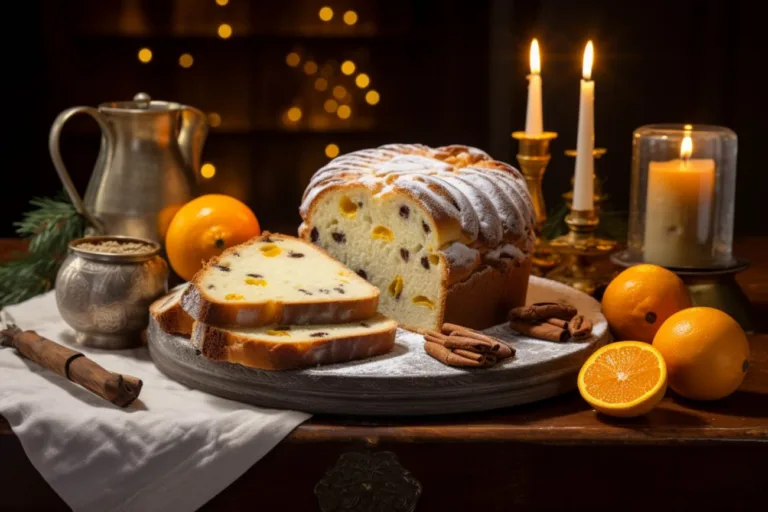Welcome to our comprehensive guide on panettone, the iconic Italian Christmas delicacy that has captured the hearts and palates of people around the world. In this article, we will delve into the rich history, delightful flavors, and cultural significance of panettone. Join us as we explore the origins of this delectable dessert, its unique ingredients, and the traditions associated with its consumption.
The origins of panettone
Panettone, a beloved sweet bread hailing from Italy, has a history as rich as its flavor. Its origins can be traced back to the bustling city of Milan, where it first emerged during the medieval era. The word „panettone“ itself is derived from the Italian words „pane“ (bread) and „ettone“ (large), highlighting its characteristic tall and dome-shaped form.
Legend has it that panettone was created by a young Milanese nobleman who fell in love with the daughter of a humble baker named Toni. In an attempt to win her heart, he disguised himself as a baker’s apprentice and invented a sweet bread using exotic fruits and spices. This bread, known as panettone, became an instant sensation and eventually evolved into the iconic treat we know today.
The art of preparation
Panettone is more than just a dessert – it’s a culinary masterpiece. Its preparation is a labor of love that requires attention to detail and patience. The dough is a delicate balance of flour, butter, eggs, and sugar, resulting in a soft and airy texture. What sets panettone apart is the addition of candied fruits and raisins, which infuse the bread with bursts of sweetness and vibrant colors.
The dough is left to rise multiple times, allowing the flavors to develop and the bread to achieve its characteristic height. Bakers carefully shape the dough into its signature cylindrical form, often using specialized panettone paper molds. As it bakes, the kitchen fills with an irresistible aroma that beckons all who enter.
Cultural significance and traditions
Panettone is deeply intertwined with Italian holiday traditions, particularly Christmas and New Year’s celebrations. Families gather around festive tables, eagerly anticipating the moment when the panettone is unveiled. Slices of this golden-brown delight are often enjoyed with a glass of sweet wine or a cup of hot cocoa.
In Italy, it’s customary to gift panettone to loved ones during the holiday season as a symbol of good luck and prosperity. Many businesses also present panettone to clients and employees as a gesture of gratitude. The act of sharing panettone embodies the spirit of togetherness and generosity that defines this joyous time of year.
Frequently Asked Questions (FAQs)
What is the best way to enjoy panettone?
Panettone can be enjoyed in various ways. Traditionally, it’s sliced and savored on its own or accompanied by a glass of wine. Some also enjoy it toasted with a dollop of mascarpone or a drizzle of chocolate sauce.
Can I make panettone at home?
Absolutely! While it requires a bit of time and patience, making panettone at home can be a rewarding experience. There are numerous recipes available that guide you through the process step by step.
Is panettone only available during the holidays?
Panettone is most closely associated with the holiday season, but its popularity has led to its availability year-round in many places. However, the festive spirit surrounding panettone is especially strong during Christmas and New Year’s.
Are there variations of panettone?
Yes, there are several variations of panettone that cater to different tastes. Some versions incorporate chocolate chips, dried fruits, or even a cream filling. These variations offer a delightful twist on the classic recipe.
Pozri tiež:






